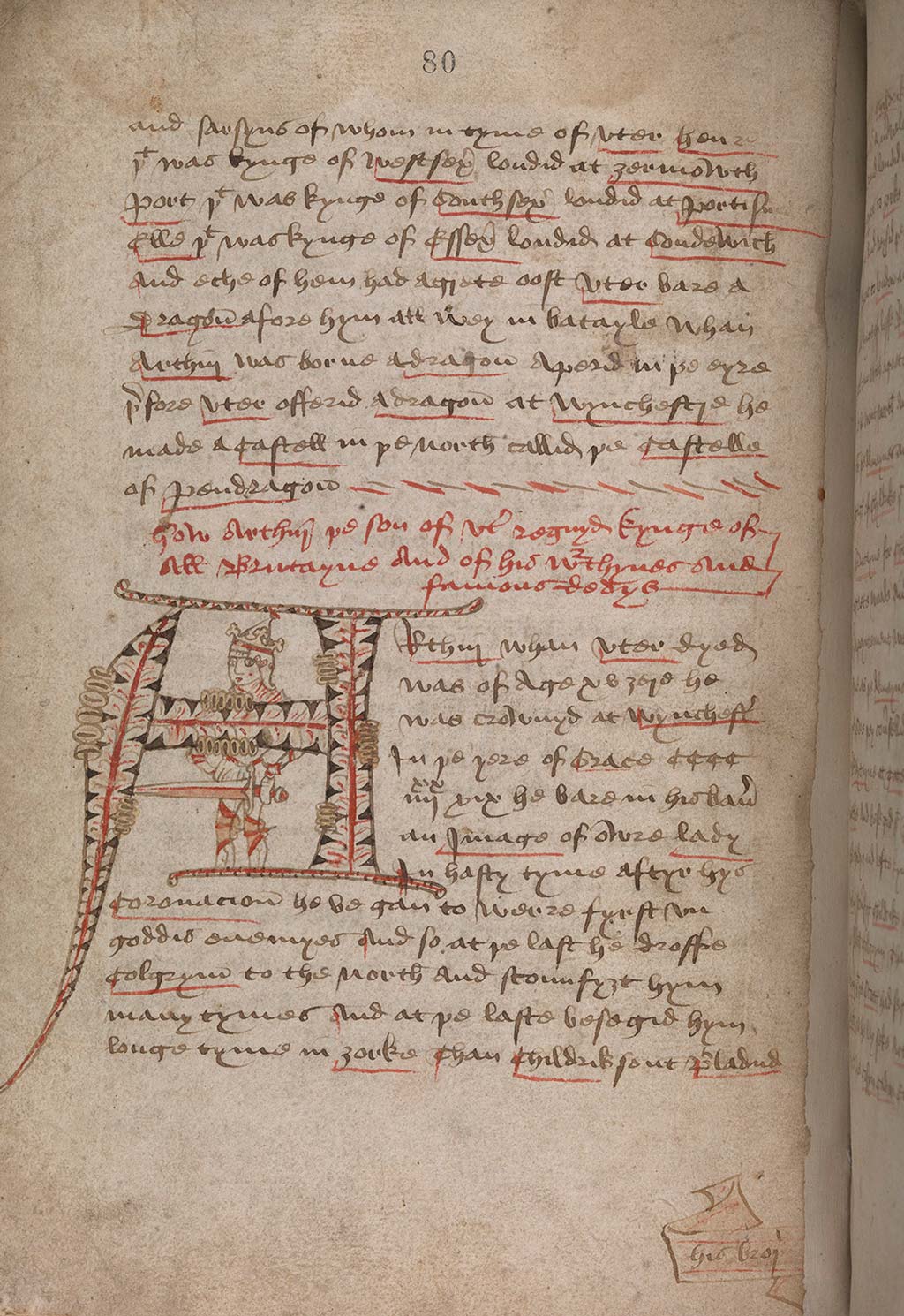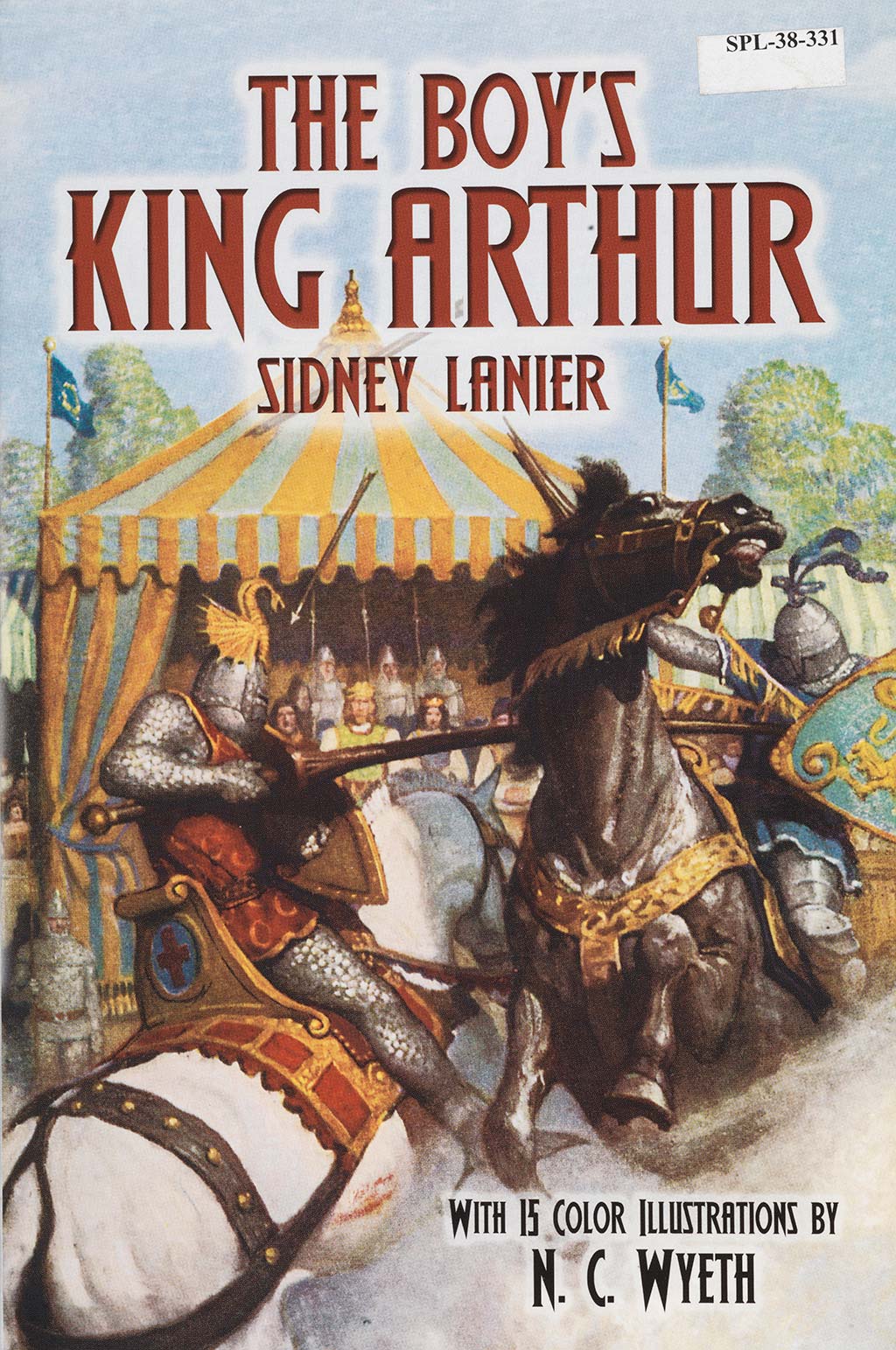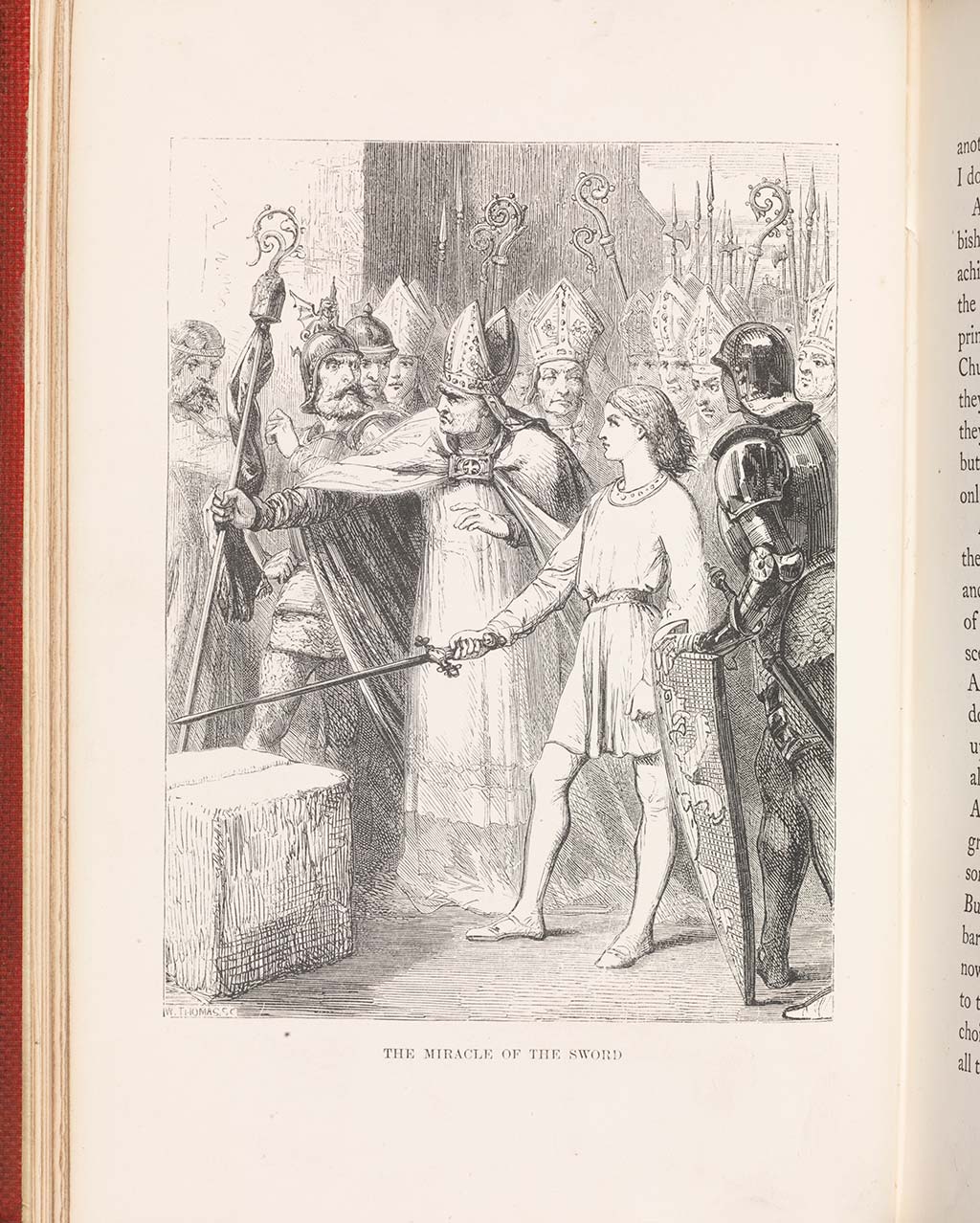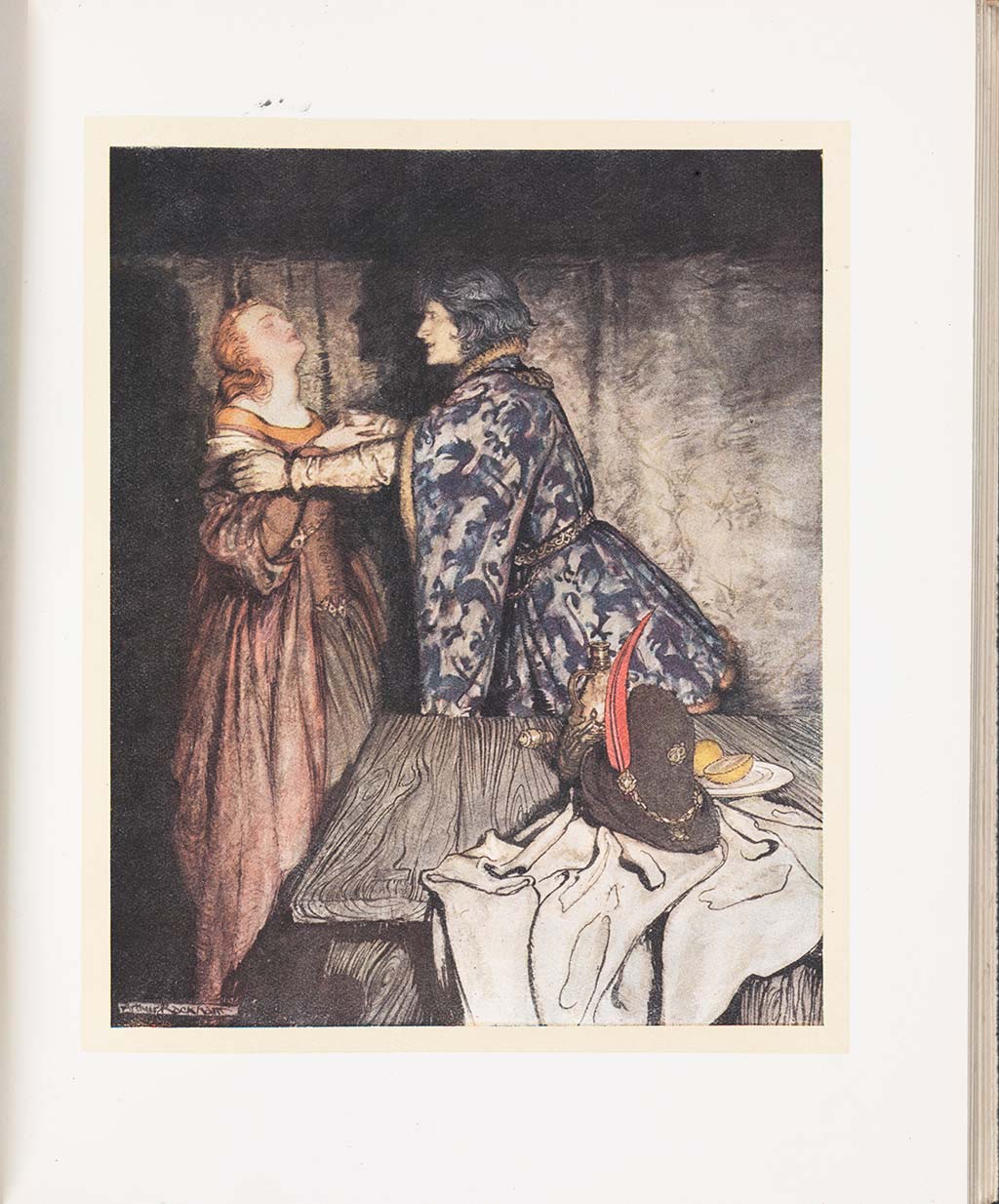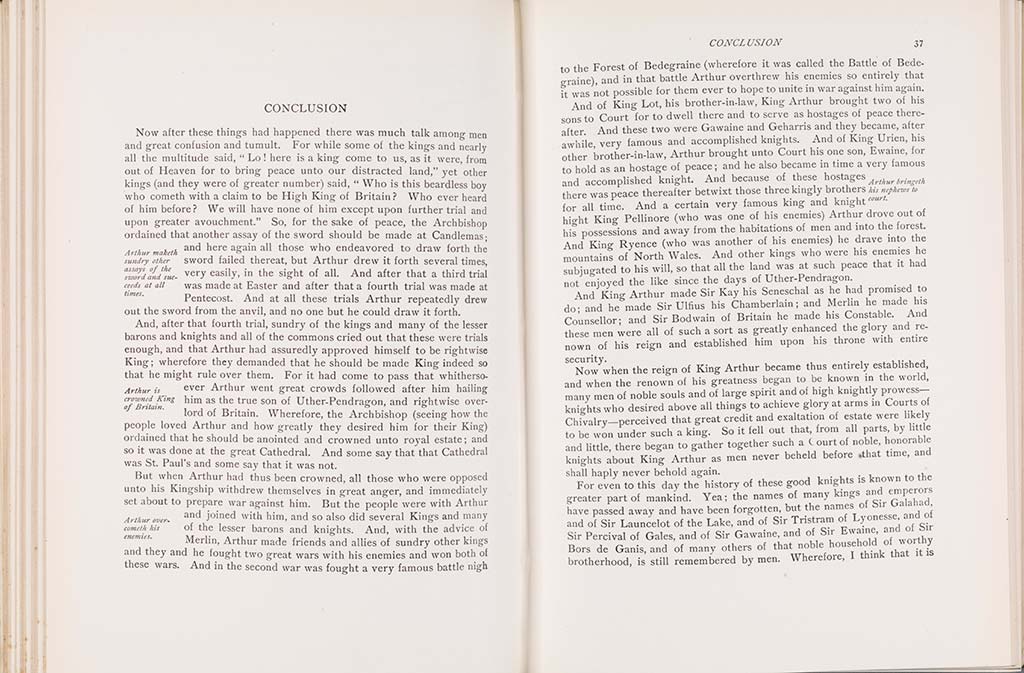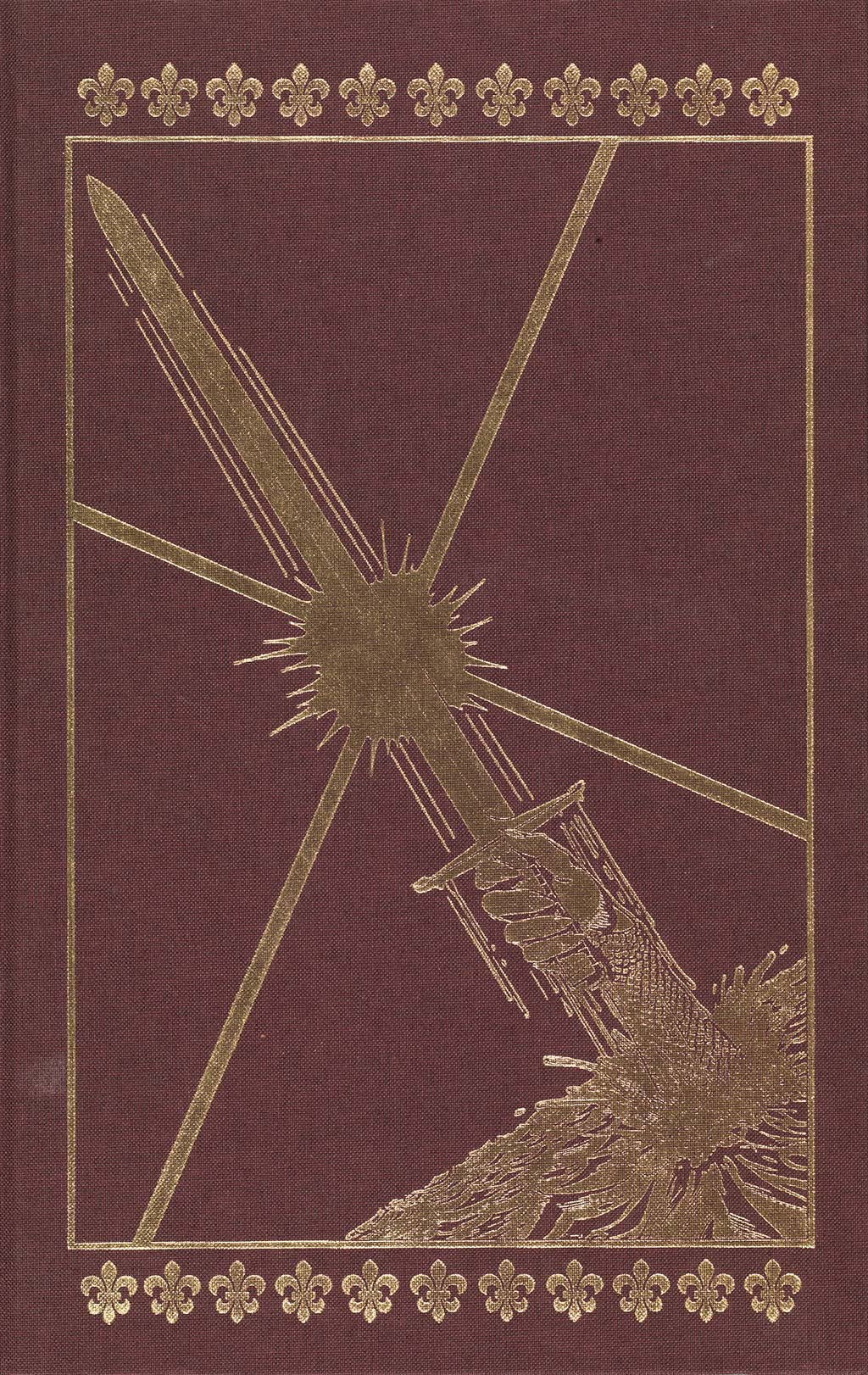Arthurian Myths
Geoffrey of Monmouth’s Historia regum Britanniae (c. 1136) relates the imagined history of Britain from its settlement by Brutus, a direct descendent of Aeneas, and features one of the first extensive accounts of the life of King Arthur. Wace’s Roman de Brut (c.1155) added the Round Table to the stories, but it is Thomas Malory’s Le morte d’Arthur (completed 1469-70) that had the greatest influence on the development of Arthurian narratives.
In the latter part of the 19th century, at the height of the British Empire, many authors drew upon these myths to create tales of valour and adventure, targeting boy readers in particular. This was also the period that became known as the Golden Age of children’s books, when developments in printing technologies coincided with the emergence of brilliant illustrators and authors.
Many versions of the Arthurian myths for children focus on the power and might of Arthur and his chivalrous knights; others explore ideas of morals, justice, and the futility of searching for unattainable treasures; while several examine the roles of Guinevere, Morgan Le Fay, the Lady of the Lake, and Isolde. Up to the present day, authors have continued to capture the imagination of child readers by incorporating aspects of these myths into their narratives, including a magical mentor, the taking charge of individual destiny, and a realisation that you cannot control with whom you fall in love.
The Myth of Arthur
The Brut chronicle
c. 15th century
TCD MS 489
The Brut chronicle, which draws from Geoffrey of Monmouth’s Historia regum Brittanniae, is an account of the foundation and early history of Britain. It begins with the story of Brutus, great-grandson of Aeneas, who leaves Italy and eventually founds a city on the banks of the river Thames. There are an estimated 250 manuscript versions of the prose Brut; Trinity College’s Manuscripts and Archives Research Library holds ten versions.
In TCD MS 489, the chapter on Arthur begins with an image of the crowned King in the decorated opening capital.
Sidney Lanier
Illustrated by N.C. Wyeth
The boy’s King Arthur
Mineola (N.Y.), 2006
SPL-38-331
Many stories of Arthur begin with the wizard Merlin, mentor to and protector of Arthur, who takes the baby Arthur from his parents and leaves him to be raised by a knight named Sir Ector. American author Sidney Lanier (1842-1881) first published The boy’s King Arthur in 1880, and used Thomas Malory’s Le morte d’Arthur as his source text. N.C. Wyeth was an American artist, a pupil of author and illustrator Howard Pyle (1853-1911).
Cover reproduced by permission of Dover Publications.
James Thomas Knowles
Illustrated by G.H. Thomas
The story of King Arthur and his Knights of the Round Table
London, 1862
Gall.L.14.58
The rite of passage story of Arthur’s removal of the sword from the stone is one of the most popular Celtic myths retold for children. Many famous 20th century authors – from T.H. White to Susan Cooper to Diana Wynne Jones – incorporate Arthurian myths and legends into their writings for children.
James Thomas Knowles (1831-1908) was an English architect and writer. George Housman Thomas (1824-1868) was a famous English artist and illustrator of the 19th century.
J.K. Rowling (1965-) draws upon many types of myths in creating her Harry Potter series. Dumbledore as a mentor and guardian character can be read as a re-imagining of the Merlin figure of Arthurian myths.
Tristram and Isolde
Alfred W. Pollard
Illustrated by Arthur Rackham
The romance of King Arthur and his Knights of the Round Table: abridged from Malory’s Morte d’Arthur
London, 1917
66.ff.51
Influenced by the Pre-Raphaelites and Japanese prints, Englishman Arthur Rackham (1867-1939) was one of the most important illustrators of the Golden Age of children’s literature.
Alfred W. Pollard (1859-1944) was an English bibliographer and Keeper at the Department of Printed Books at the British Museum.
Howard Pyle
The story of King Arthur and his Knights
London, 1903
53.b.106
Arthurian and Celtic myths not only tell the tales of the King but also follow the adventures of the chivalrous knights whom he gathered around his table. The hero Tristram (Tristan) of Lyonese was one such knight and his relationship with the Irish woman Isolde (Isoud) is one of the most famous love stories ever written. Although she is due to marry King Mark, once Tristram and Isolde drink the love potion, they are lovers for life. It is claimed that Islode gives her name to the Dublin suburb of Chapelizod, or ‘Séipéal Isolde’.
Mike W. Barr, Brian Bolland et al.
Camelot 3000
New York, 2008
HX-84-511
In DC Comics’ Camelot 3000, Arthur and his Knights are re-imagined and placed in a futuristic world. In this version, both Tristan and Isolde are women; the representation of their same-sex relationship adds increased significance to the tale’s central themes of power and love.

